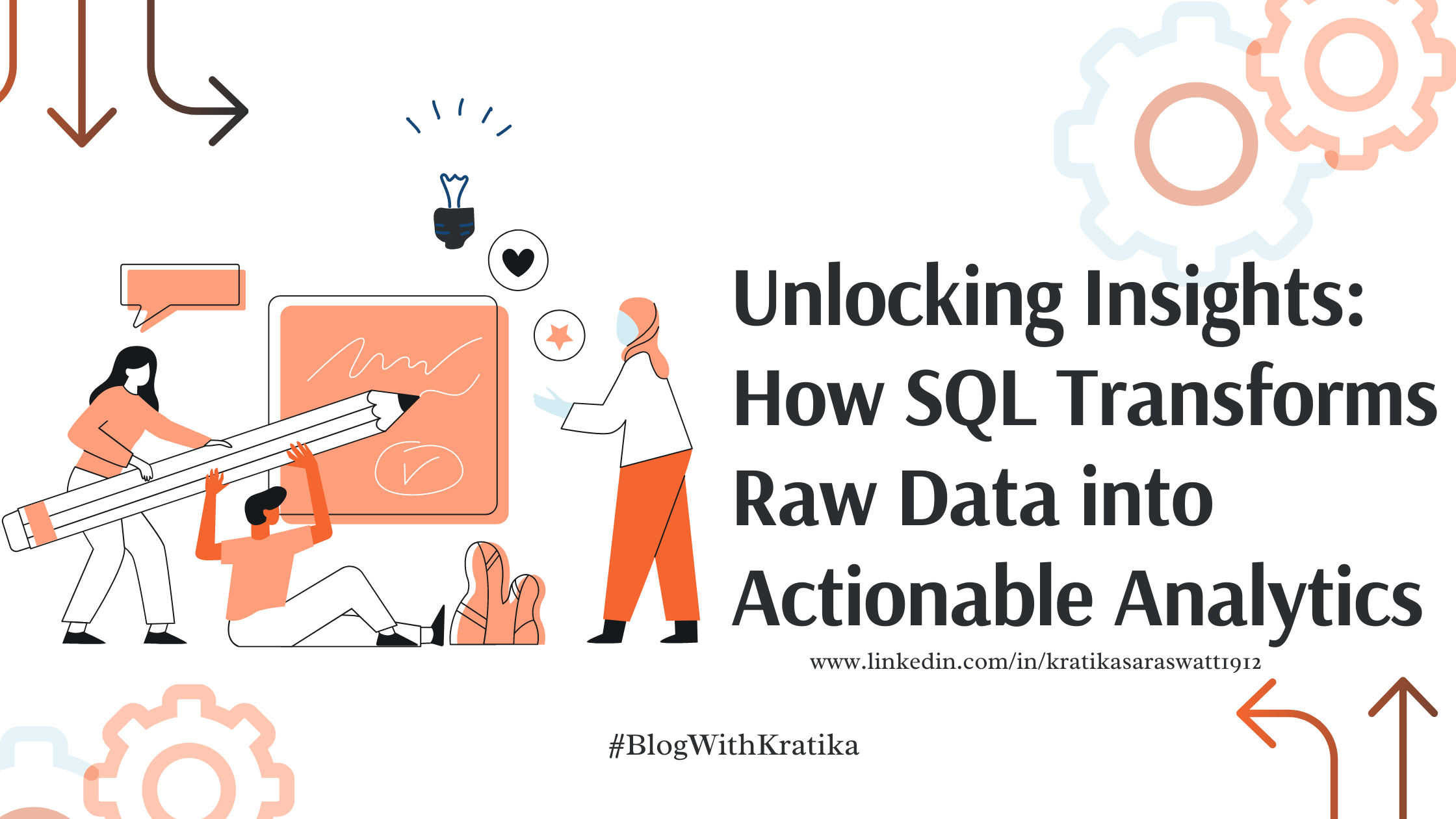Unlocking Insights: How SQL Transforms Raw Data into Actionable Analytics
 Kratika Saraswat
Kratika Saraswat
In the modern world of data, raw numbers and records are just the beginning. The real value lies in the insights we can derive from this data to drive decision-making and strategy. Structured Query Language (SQL) plays a crucial role in this process, offering a robust framework for querying, analyzing, and interpreting data. Here’s how SQL can help unlock valuable insights from raw data without diving into the technical code.

The Power of Data Retrieval
SQL excels in efficiently retrieving specific data from large databases. Imagine you have a vast sea of sales records, and you need to find details only for a particular time period or region. SQL enables you to sift through this data quickly and extract exactly what you need. This targeted retrieval means you can focus on relevant data, avoiding the noise of unrelated records.
Summarizing Data for Clarity
Once data is retrieved, summarizing it helps in understanding overarching trends and patterns. SQL allows for the aggregation of data, such as calculating total sales, average values, or counting occurrences. For instance, if you need to understand how different regions are performing in terms of sales, SQL can group the data by region and provide summaries like total and average sales figures. This summary view helps in making sense of large datasets and identifying key insights.
Filtering and Transformation
Not all data is useful for every analysis. SQL’s filtering capabilities let you focus on the data that meets specific criteria. For example, if you’re only interested in high-value transactions, SQL can help isolate these records from a larger dataset. Additionally, SQL can transform data by categorizing or modifying it to better suit your analysis needs, allowing you to adapt the data to your specific questions and objectives.
Integrating Data from Multiple Sources
In many organizations, data is spread across different tables or even different databases. SQL's ability to combine data from multiple sources through joins is invaluable. By integrating data from various tables, you can get a more comprehensive view. For instance, you might combine sales data with customer information to get a complete picture of customer purchasing behavior and sales performance.
Generating Reports and Dashboards
SQL queries can be the foundation for creating detailed reports and dashboards. These tools allow for dynamic and interactive data exploration. For example, you might use SQL to pull data for a daily sales report or to build a dashboard that visualizes sales trends over time. These visual tools make it easier to communicate insights and track performance at a glance.
Best Practices for Effective Data Analysis
Efficiency Matters: Optimizing queries ensures faster processing times and more efficient analysis.
Data Accuracy: Regularly validating your data helps maintain its integrity and reliability.
Clear Organization: Keeping your queries and data analysis organized and well-documented makes it easier to understand and share insights.
Conclusion
SQL is more than just a language for managing databases; it’s a powerful tool for transforming raw data into actionable insights. By harnessing SQL’s capabilities for data retrieval, summarization, filtering, integration, and reporting, you can unlock valuable information that drives strategic decision-making. Whether you’re building reports, creating dashboards, or conducting detailed analyses, SQL provides the foundation for turning data into a strategic asset.
With SQL, you can bridge the gap between raw data and meaningful insights, enabling better decisions and driving business success.
Subscribe to my newsletter
Read articles from Kratika Saraswat directly inside your inbox. Subscribe to the newsletter, and don't miss out.
Written by
